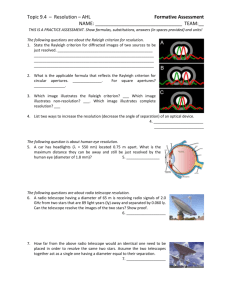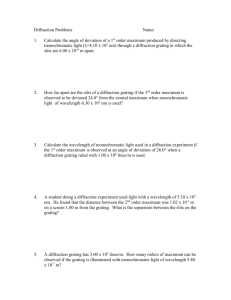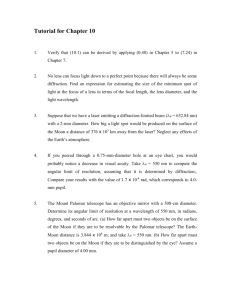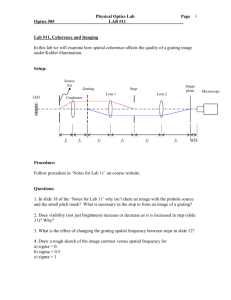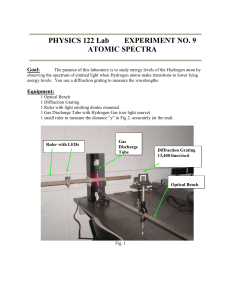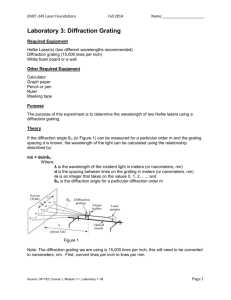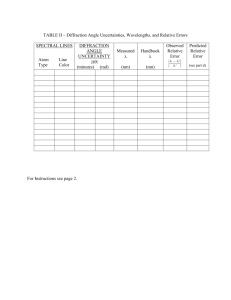Project 3
advertisement
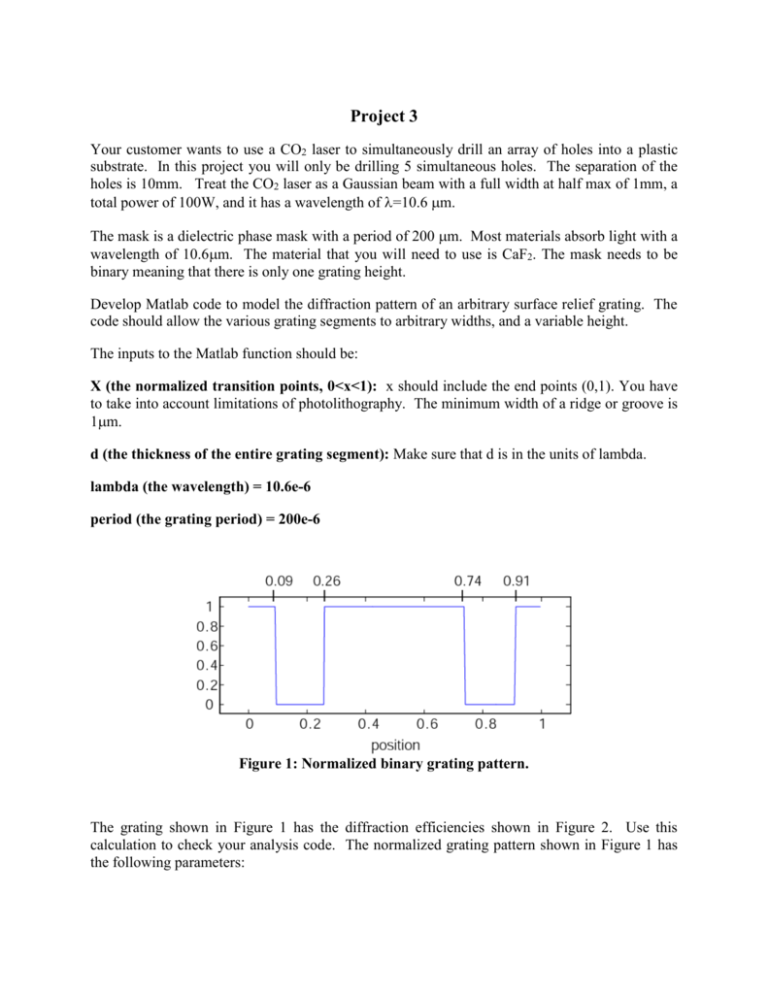
Project 3 Your customer wants to use a CO2 laser to simultaneously drill an array of holes into a plastic substrate. In this project you will only be drilling 5 simultaneous holes. The separation of the holes is 10mm. Treat the CO2 laser as a Gaussian beam with a full width at half max of 1mm, a total power of 100W, and it has a wavelength of =10.6 m. The mask is a dielectric phase mask with a period of 200m. Most materials absorb light with a wavelength of 10.6m. The material that you will need to use is CaF2. The mask needs to be binary meaning that there is only one grating height. Develop Matlab code to model the diffraction pattern of an arbitrary surface relief grating. The code should allow the various grating segments to arbitrary widths, and a variable height. The inputs to the Matlab function should be: X (the normalized transition points, 0<x<1): x should include the end points (0,1). You have to take into account limitations of photolithography. The minimum width of a ridge or groove is 1m. d (the thickness of the entire grating segment): Make sure that d is in the units of lambda. lambda (the wavelength) = 10.6e-6 period (the grating period) = 200e-6 Figure 1: Normalized binary grating pattern. The grating shown in Figure 1 has the diffraction efficiencies shown in Figure 2. Use this calculation to check your analysis code. The normalized grating pattern shown in Figure 1 has the following parameters: Refractive index n=1.5 Total thickness d=1m Wavelength =0.67m Substrate index ns=1.5 Cover index nc=1.0 Incident angle =0o The resulting normalized diffraction efficiency for the various orders is: Figure 2: Diffraction efficiency. Order Normalized DE Normalized DE Order -7 0.0002 0 1.0000 -6 0.0002 1 0.0819 -5 0.0063 2 0.1018 -4 0.0065 3 0.1661 -3 0.1661 4 0.0065 -2 0.1018 5 0.0063 -1 0.0819 6 0.0002 7 0.0002 (a) Document your Matlab code and provide a detailed write up on the code. (b) Demonstrate that the code works by analyzing the grating shown in Figure 1. The project should include the following. 1. A diagram of your designed masks labeled with dimensions. 2. A plot of the intensity pattern at the plane of the plastic substrate. This analysis will use a Fraunhoffer approximation. This project should include the following sections. All figures should have a caption and be described in the text of your report. You should not have any figures that are not referenced in the text. 1. 2. 3. 4. 5. Introduction: Describe the system that you are designing Design: Describe your design with diagrams. Analysis: Describe the equations that you are using. Results: Describe you resulting calculations. Appendix: Include the code that you used.
